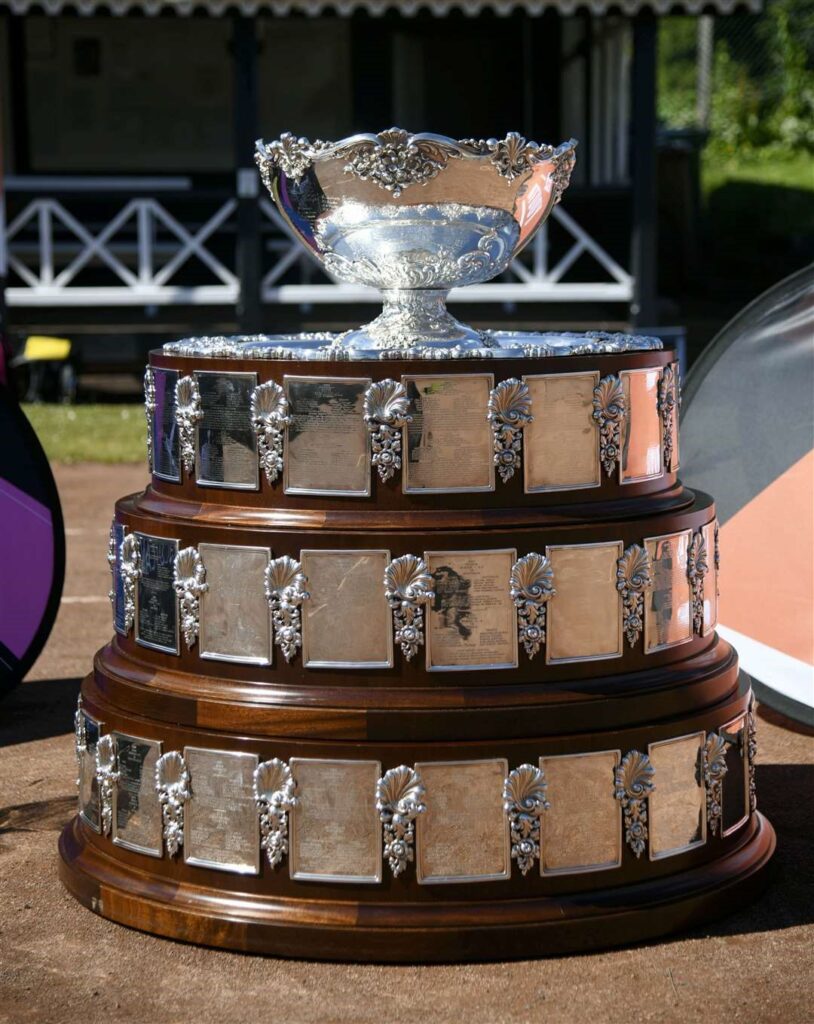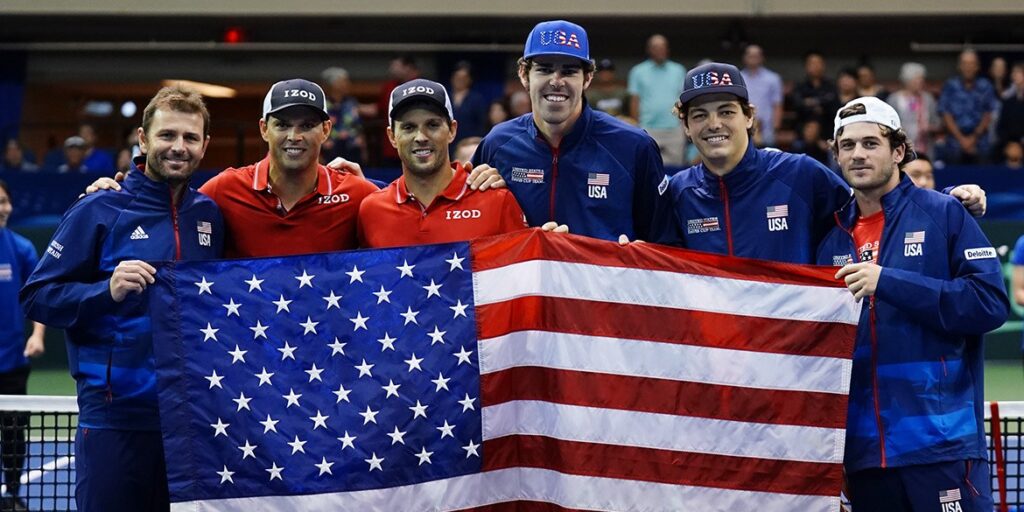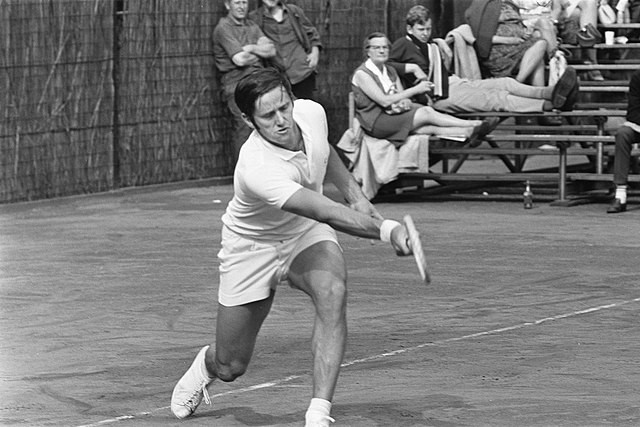The 2023 tennis concluded with the 2023 Davis Cup finals, where Italy became the champion for the second time. This year’s event was the 111th edition of this prestigious competition in which men’s national teams compete. Italy emerged victorious over Australia in the final by a score of 2-0. This article will explore the history of the Davis Cup, as well as a variety of fun facts.
For instance, the United States has had the most success in the history of the Davis Cup, winning 32 times. The women compete in a similar competition called the Billie Jean King Cup, which we wrote about earlier.

Davis Cup Trophy
History of the Davis Cup
The Davis Cup was founded in 1900 and is named after its founder Dwight F. Davis, a former American tennis player and politician. Today, over 140 national teams compete in the Davis Cup, but in the beginning the tournament was not nearly as popular. At that time, only two national teams competed, the United Kingdom and the United States. Davis put into action an idea that had been simmering for years.
The first president of the American Tennis Federation, James Dwight, wanted the best American and British players to compete against each other, but the first match was not held until 1900. The first match in Davis Cup history was held in Boston at the Longwood Cricket Club.

Dwight Davis, founder of Davis Cup
The founder of the Davis Cup was the captain of the first American team, and the Americans managed to surprise the British, who had stronger players at the time. The Davis Cup first expanded in 1905 when Belgium, Austria, France and a national team made up of players from Australia and New Zealand joined the competition. The competition was designed so that the defending champion would wait for the best team to emerge from among the other national teams, and then the defending champion would play that team in the finals.
Over time, the national teams were divided into two zones: America and Europe, and the best team from both zones would compete along the defending champion in the final. Later, a third, eastern zone was introduced, and then the European zone was divided into two zones as the number of participants increased over time.
In the early 1970s, the format changed and the defending champion participated in the entirety of the competition, which operated based on a knockout system.
The complete Davis Cup rules can be found here.

The United States has 32 Davis Cup titles
FUN FACT: During the 1950s and 1960s, Australia dominated the Davis Cup, winning the title 15 times from 1950-1967.
FUN FACT: Professionals did not compete in the Davis Cup until 1973.
FUN FACT: Until 1973, the Davis Cup was won by only four national teams: United States, Great Britain, France and Australia. The dominance of those national teams was interrupted by South Africa, which defeated India in the 1974 Davis Cup final. India actually forfeited the finals as its players refused to travel to South Africa because of apartheid. The following year, in a shocking underdog final, Sweden defeated Czechoslovakia.
The Davis Cup underwent another reform in the early 1980s, when the 16 best national teams were placed in a world group, while the other national teams were divided into groups within several geographical zones.
FUN FACT: Tie break was introduced in the Davis Cup only in 1989.
Current Format of the Davis Cup
155 national teams are currently competing in the Davis Cup, which have been assigned to the appropriate group based on the ranking on the International Tennis Federation (ITF) list. The 18 best national teams compete in the Davis Cup Finals. Since 2019, in the Davis Cup Finals, the national teams compete in 6 round robin groups of three teams each. Each team plays two singles matches and one doubles match. The winners of each of the 6 groups, along with the next two teams with the best records, all make it to the eight team semifinals.
Teams that do not compete in the Davis Cup Finals are divided into three zones. Those zones are Asia/Oceania, Americas, Europe/Africa. Each zone has several sub-groups, with the teams in Group One in each zone competing for a chance to make it to the Davis Cup Finals in the next year.
FUN FACT: The Davis Cup trophy contains 217 ounces of silver, is 13 inches tall and has a diameter of 18 inches.
FUN FACT: The United States is the most successful national team in the history of the Davis Cup with 32 titles. It was also runner-up 29 times. Behind it is Australia with 28 titles, while France and Great Britain have 10 titles each.
FUN FACT: While the United States has won the Davis Cup a record 32 times, the last time it won the title was in 2007. Great Britain, which last won the title in 2015, previously had a 76-year gap between titles. Australia has been waiting to win the Davis Cup for two decades.

Roy Emerson, the most successful player in Davis Cup history
FUN FACT: The most successful individual player in the history of the Davis Cup is Roy Emerson. Emerson, the legendary Australian player, has helped Australia win eight titles.
FUN FACT: The person who has the most titles won as Captain of his nation’s team is fellow Australian Harry Hopman, who was Captain of 16 victorious teams.
FUN FACT: Leander Paes, one of the most successful doubles players of all time, played in the Davis Cup for India for 30 years.
FUN FACT: The most matches played by an individual in Davis Cup history were played by former Italian player and two-time champion at the French Open, Nicola Pietrangeli, who played an extraordinary164 Davis Cup matches. He won 120 of those matches, which is also a record, but he never won the Davis Cup trophy.
FUN FACT: The tiny European nation of San Marino is, not surprisingly, one of the weakest national teams in tennis as well as in other sports. However, San Marino tennis players do hold a couple of interesting Davis Cup records. Both the youngest and oldest player in Davis Cup history played for San Marino. Marco de Rossi played in 2011 at only 13 years and 319 days old. This record is unlikely to ever be broken as the current rules only allow players 14 and over to compete (see Rule 14.1.1.2). Vittorio Pellandra became the oldest player to compete at the Davis Cup when who competed at the age of 66 years and 104 days.







